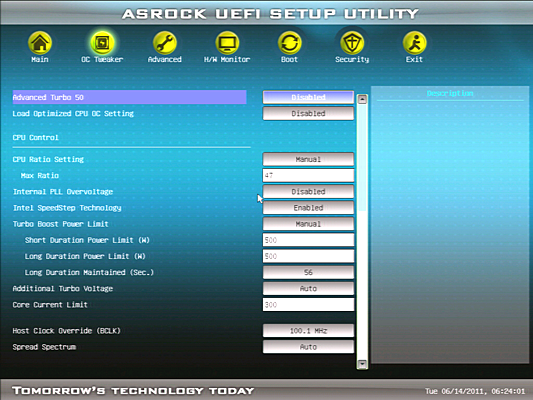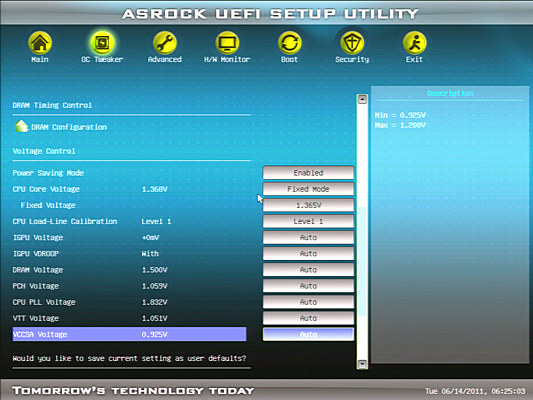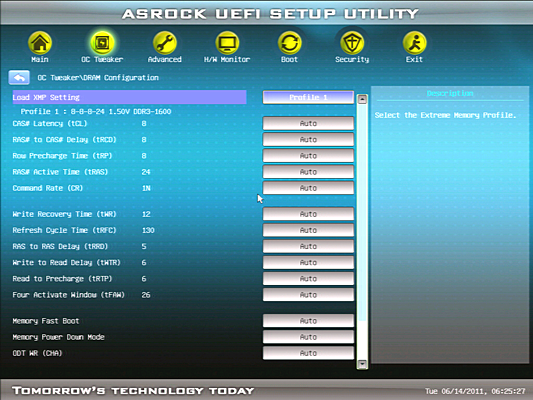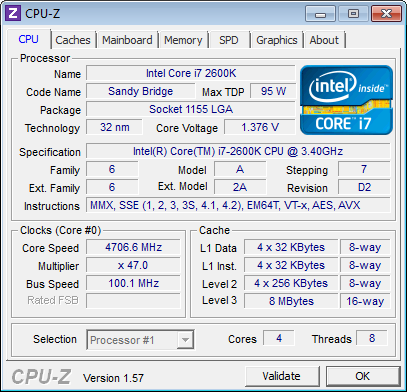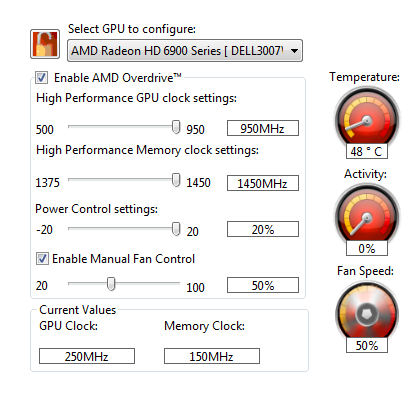System Builder Marathon, June 2011: $2000 Performance PC
Overclocking
We began our overclocking efforts by trying to repeat the settings from last quarter's build. Unfortunately, this combination of hardware simply didn’t work all that well at 1.40 V.
So, first we had to find the best stable clock, using eight thread of Prime95 to test each possible combination of settings.
Note that we couldn’t reach a 48x multiplier. Still trying to get close to the previous build’s 4.8 GHz, we tried increasing base clock, but continuously ran into a stability wall. Eventually we settled with 100.1 MHz. Next, we tried lower voltage.
The system wouldn’t overclock higher at less voltage, but we were able to reduce power consumption somewhat by dropping CPU core to 1.365 V. The lower core voltage also aids the processor’s survival time, even though we estimated that the same CPU could survive 1.40 V for many months, likely exceeding a year. Perhaps 1.365 V will give us multiple years of operation?
Any attempt to set timings manually failed, even after trying various memory voltage settings. XMP Profile 1 worked flawlessly, but didn’t give much room for overclocking.
Setting “CPU Load-Line Calibration” to Level 1 causes core voltage to increase slightly at high CPU loads. Lower calibration levels allow the voltage to drop under load, when it was most needed for extra stability.
AMD's Catalyst Control Center has a built-in overclocking utility that works fairly well within the limits of its Radeon HD 6970 GPU, though those limits are artificially placed and somewhat conservative. The problem is that reference-based cards have a limited range of frequencies, and software unlocking, such as the configuration file change in MSI Afterburner, simply didn’t work. We even tried the latest Afterburner version with the verbose configuration file change to no avail, instead settling for the limits of graphics driver’s built-in utility.
Get Tom's Hardware's best news and in-depth reviews, straight to your inbox.
-
regenon I gess u wanted to say:Reply
A pair of Radeon HD 6950s beats a pair of GeForce GTX 570s at our 2560x1600 target resolution, and the HD 6970 is even faster. -
Tamz_msc Finally you made a decent choice regarding the case. I could not believe you went with the Antec 300s on previous builds of this category.Reply -
buzznut I agree, though some may care less for what's on the outside I can't see putting together a $2000 PC with a 50 dolla case.Reply -
Yes, I am pleased to see a classy looking Lian Li case being used and not one of those gargoyle-inspired transformer-looking abominations that appeal only to google-eyed children and pimply-faced teenagers. That an adult might actually purchase that sort of monstrosity damped my hope for the future of the supposedly mature population of this world!Reply
-
hmp_goose So it's now considered "safe" to RAID 0 SSDs? I thought Tom's once had a big "here be dragons" label for that practice …Reply -
compton I too like the upgrade to a Lian Li. I didn't have a problem with the SBM method of fitting into a tightly constrained budget - but it's still good to see an attractive system as well as impressive performance. If someone is building a $2000 system, they can pony up a couple extra bucks for a better case. The System Builder Marathon is one of the best things going.Reply -
dragonsqrrl Again, another great high-end build (very similar to previous build), and my only real complaint (albeit a small one) from the last $2000 system was also addressed, the case.Reply
Are you guys satisfied with your decision to go with a higher-end case? Have you noticed any tangible benefits? For example, lower system temps, better build quality, better cable management, more interior room to work, additional features, etc...? -
whysobluepandabear Todd SauveYes, I am pleased to see a classy looking Lian Li case being used and not one of those gargoyle-inspired transformer-looking abominations that appeal only to google-eyed children and pimply-faced teenagers. That an adult might actually purchase that sort of monstrosity damped my hope for the future of the supposedly mature population of this world!Reply
You give vivid details describing children and teenagers, but might I add something for the adults? Something like: "That a wrinkly, weaker and deteriorating adult might actually purchase". Something along those lines - we must make those adults look like old fuddy-duddies, whom are at the brink of a midlife crisis any moment now!

